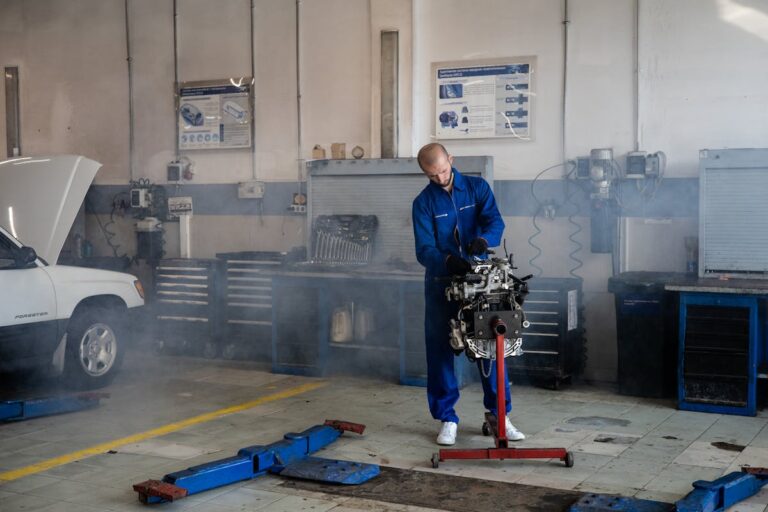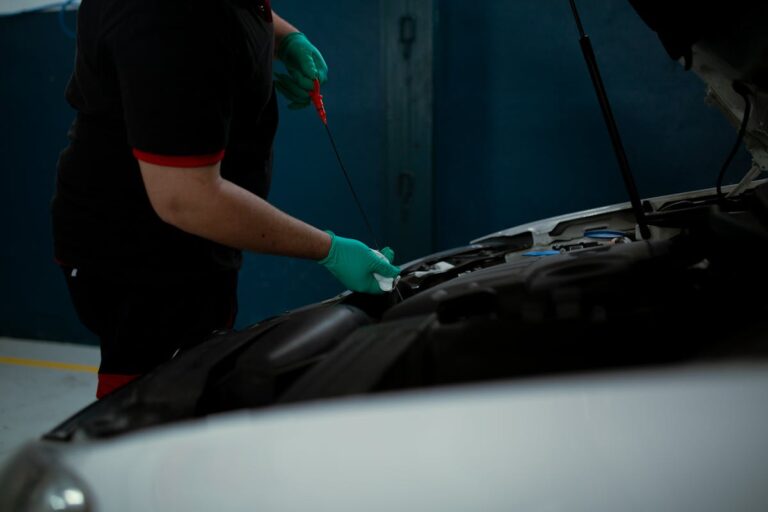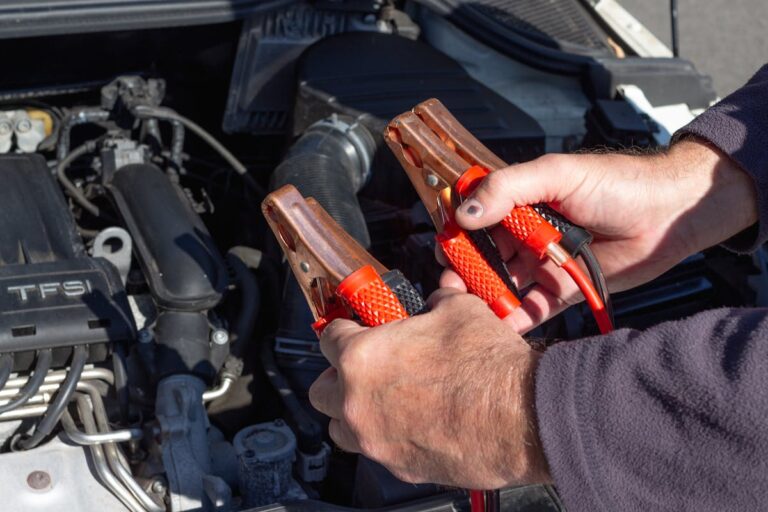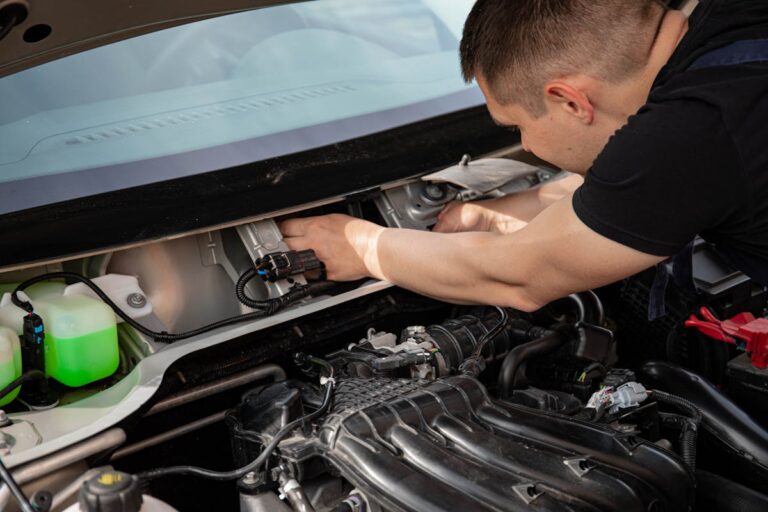As we progress through the diverse seasons, so does the condition and performance of our vehicles. Each season, with its unique weather patterns and temperature ranges, presents different challenges to various components of our cars, from the battery to the tires. The cold winter months can prove harsh for the battery and engine oil, while the intense heat of summer poses risks of overheating and tire blowouts. Are we giving enough attention to these seasonal shifts and their consequences? Join us as we explore the ways to anticipate, understand, and mitigate these seasonal effects on our vehicles for peak performance and safety.
Understanding Car Performance Basics
Kicking off our thorough exploration into car performance, it is crucial to grasp the basic principles that govern how a vehicle operates. The crux of this operation lies in engine efficiency, a technical term referring to the proportion of energy that is effectively converted into work by the car engine. The higher the efficiency, the more power is produced for the same amount of fuel.
Engine efficiency is directly correlated to fuel economy, a concept that pertains to the distance a vehicle can travel per unit of fuel consumed. High fuel economy implies lower fuel consumption and vice versa. It is influenced by several factors including the engine design, vehicle weight, aerodynamics, and driving conditions.
Optimal engine efficiency is achieved through a delicate balance of air and fuel mixture. Combustion efficiency increases when the air-fuel ratio is perfectly balanced, leading to improved fuel economy. This delicate balance, however, can be disrupted by changes in environmental conditions, resulting in decreased engine efficiency and fuel economy.
Winter’s Impact on Vehicles
As we shift into the “Winter’s Impact on Vehicles” section, the focus shifts to the detrimental effects of cold weather on automobile functionality. The discussion will encompass decreased battery performance, tire pressure fluctuations, and engine oil thickening, which are all prevalent issues during the frosty season. Understanding these factors will provide an all-encompassing view of winter’s unique challenges to vehicle maintenance and performance.
Decreased Battery Performance
The advent of winter often heralds a notable decrease in battery performance for vehicles. The primary reason behind this phenomenon is the impact of cold temperatures on the battery’s chemical processes.
Batteries generate power through a series of chemical reactions, and cold temperatures can notably slow these reactions down. As a result, the battery’s capacity to hold and deliver charge is reduced, negatively impacting its overall performance. A drop in temperatures below freezing can decrease a battery’s output by up to 50 percent.
Additionally, cold temperatures can wreak havoc on a battery’s lifespan. In a process known as sulfation, when a battery’s charge drops, lead sulfate crystals accumulate on the battery plates. These crystals harden in cold temperatures, causing irreversible damage and reducing the battery’s lifespan.
Furthermore, the engine oil thickens in lower temperatures, making the engine harder to turn over and putting additional strain on the battery.
Tire Pressure Fluctuations
Plunging into the icy heart of winter, vehicles can experience significant tire pressure fluctuations. These fluctuations are primarily the result of temperature variations that occur during the colder months.
According to the laws of physics, specifically Gay-Lussac’s law, the pressure of a gas in a sealed container (like a tire) is directly proportional to its temperature. As the temperature drops, the pressure in the tires can decrease. In fact, for every drop of 10 degrees Fahrenheit, tire pressure decreases by about one PSI (Pounds per Square Inch). This is a considerable change that can severely affect a vehicle’s handling and performance.
Low tire pressure can lead to increased tire wear and tear, decreased fuel efficiency, and less-than-ideal vehicle handling. It may also result in a tire blowout—a severe safety hazard. Maintaining correct tire pressure is not just a matter of performance, but also of safety.
As winter approaches, it is essential for drivers to check their tire pressure regularly. It is worth noting that tire pressure should be checked when the tires are cold, as driving heats up the tires and increases the pressure, providing a false reading. This guarantees maximum handling, longevity, and safety of your vehicle during the winter months.
Engine Oil Thickening
Winter’s icy grip not only affects tire pressure but also leads to engine oil thickening, another crucial aspect of car performance to contemplate during the colder months. When the temperature plummets, oil viscosity increases, leading to a thicker consistency. This phenomenon can negatively affect the vehicle’s operation, primarily by hampering engine lubrication.
- Oil viscosity: This refers to the oil’s resistance to flow. Cold temperatures increase this resistance, resulting in a slower flow rate. Subsequently, the oil is unable to lubricate the engine parts efficiently, leading to potential damage.
- Cold start: When an engine is started in cold conditions, the thickened oil takes longer to reach all engine parts, increasing the risk of wear and tear.
- Fuel efficiency: Oil thickening can also lead to decreased fuel efficiency. The engine works harder to pump the thicker oil, using more fuel in the process.
- Engine lifespan: Continuous operation in such conditions may lead to premature engine failure, reducing its overall lifespan.
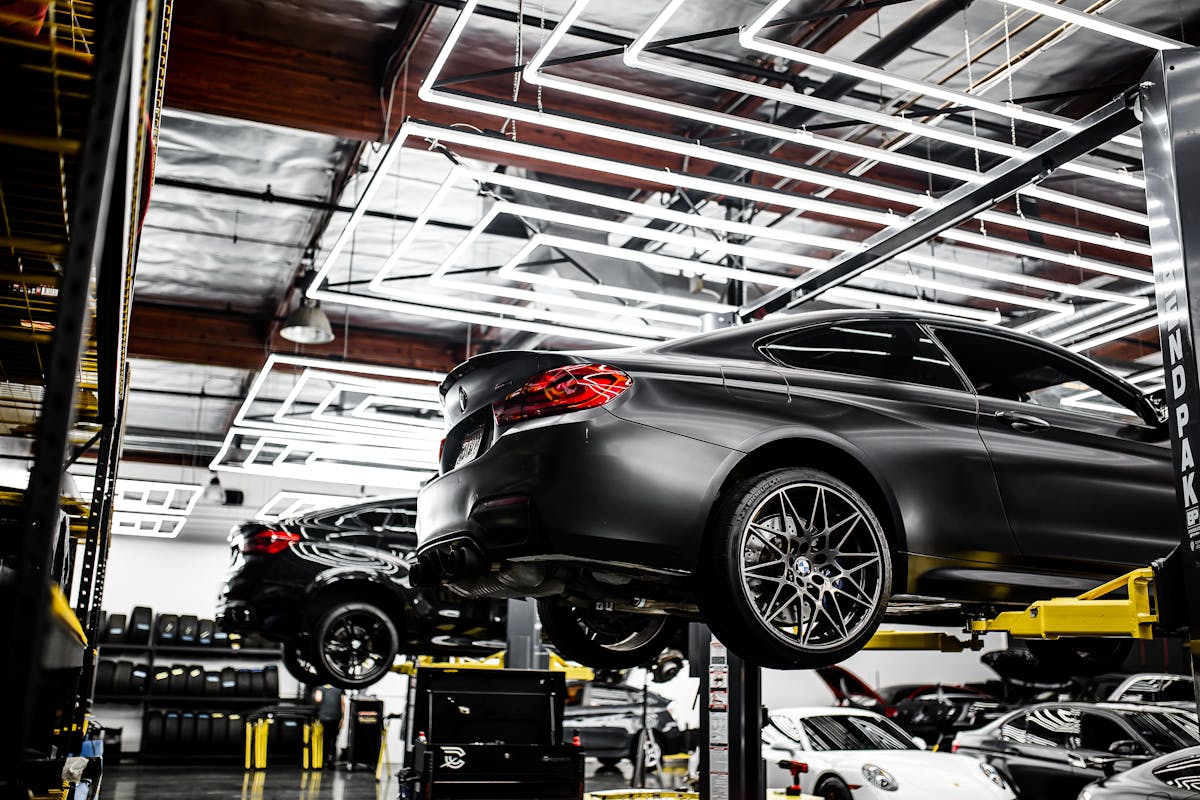
Spring Weather and Auto Performance
With the arrival of spring, the performance of your automobile can greatly change. The advent of spring ushers in a period of ‘spring cleaning,’ a vital phase to guarantee weather readiness for your vehicle. It is essential to remove the residual impacts of winter conditions, including corrosive road salts and changing fluid viscosities.
The warmer temperatures can affect tire pressure, leading to over-inflation. This could result in decreased traction, premature tire wear, and potential blowouts. It’s important to regularly check and adjust tire pressure to suit the ambient temperature.
Spring weather also introduces increased precipitation, making brake system inspection and maintenance critical. Braking components, including pads, rotors, and calipers, must be in ideal condition to handle the slick road surfaces.
Additionally, the engine coolant should be flushed and replaced to prevent overheating. The cooling system’s efficiency can degrade over time due to the accumulation of rust and scale deposits.
Furthermore, windshield wiper blades often deteriorate after the harsh winter weather, reducing visibility during spring showers. Replacing them can greatly enhance safety.
Summer Heat’s Effect on Cars
As the mercury rises in the summer months, the intense heat can have a significant impact on your car’s performance. High temperatures can exacerbate mechanical issues, leading to engine overheating, decreased air conditioning efficiency, tire blowouts, and battery failures.
The effect of heat on your vehicle can be broken down into four key areas: 1. Engine Overheating: Heat increases the risk of your engine surpassing its ideal operating temperature, resulting in overheating. This can lead to mechanical breakdowns and costly repairs. 2. Air Conditioning Efficiency: Your air conditioning system works harder in the summer, which can affect its efficiency and longevity. Regular maintenance can help guarantee peak performance. 3. Tire Pressure: High temperatures can cause the air inside tires to expand, leading to over-inflation and increased risk of a blowout. 4. Battery Life: Extreme heat can accelerate the chemical reaction inside a battery, reducing its lifespan and reliability.
To mitigate these issues, verify your cooling system is well-maintained, regularly check tire pressure, and keep your battery clean and securely mounted. Understanding the summer heat’s effect on cars can help you keep your vehicle running smoothly and prevent unexpected breakdowns.
Fall Conditions and Vehicle Durability
Seasonal changes, particularly the shift to fall weather, can greatly influence vehicle durability and performance. Abrupt temperature drops, precipitation variations, and increased debris due to falling leaves can lead to a host of automotive issues.
The cooler fall weather can affect the viscosity of engine oil, potentially leading to inadequate lubrication and increased engine wear. Similarly, tires are subject to changes in pressure due to lower ambient temperatures, impacting their grip and overall vehicle handling.
Precipitation, in the form of rain or early frost, can negatively impact braking system effectiveness. Moisture can cause rusting on brake components and reduce friction between the brake pad and rotor, potentially increasing stopping distances. Additionally, wet leaves can create slippery road conditions, further testing the traction control and stability systems of a vehicle.
The increased debris, particularly fallen leaves, also pose a threat to vehicle maintenance. Leaves can clog air filters, reducing engine performance and fuel efficiency, while also potentially causing damage to the paintwork.
Seasonal Maintenance Tips for Cars
Moving forward in our discourse, we turn our attention towards the critical area of seasonal maintenance tips for vehicles. This encompasses the paramount practices of winterizing your vehicle, summer car care, along with spring and fall checks. These preventive measures are essential for optimizing vehicle performance and longevity, given the varying stressors that different seasons impose on the mechanical and electrical systems of automobiles.
Winterizing Your Vehicle
An overwhelming majority of motorists may not realize the importance of properly winterizing their vehicles as colder weather approaches. The seasonal shift can greatly impact your car’s performance. In this situation, four important procedures can safeguard your vehicle against the harsh winter conditions.
- Winter Tire Preparation: It’s imperative to replace all-season tires with winter tires, which have a specialized rubber compound that remains pliable in freezing temperatures. Furthermore, the tread patterns on winter tires are designed to bite into snow and ice, providing superior traction.
- Checking Antifreeze Levels: Antifreeze, also known as engine coolant, is essential to prevent the engine from freezing in low temperatures. A 50/50 mix of coolant and water is generally recommended.
- Battery Inspection: Cold weather can strain the battery. It’s important to verify the battery is fully charged and the connections are clean, tight, and corrosion-free.
- Windshield Wiper and Fluid: Use winter-grade wiper blades and windshield washer fluid. The latter should be rated for -20 degrees Fahrenheit to prevent freezing.
Summer Car Care
As temperatures begin to climb, the need for summer car maintenance becomes increasingly essential. Summer tire maintenance is a fundamental aspect of this process. Tires are the only component of your car in direct contact with the road, and they’re considerably affected by high temperatures. Heat can increase tire pressure, accelerating wear and tear and potentially leading to blowouts. Consequently, regular checks and adjustments to maintain ideal tire pressure are imperative.
Thermal expansion can also affect your car’s fluids, making summer fluid checks an important part of seasonal maintenance. Fluids such as engine oil, transmission fluid, power steering fluid, and brake fluid all require inspection to ascertain they are at the correct levels and not excessively diluted or degraded. Overheating is a common occurrence in summer, and maintaining the right coolant level is crucial to prevent this.
Lastly, the air conditioning system is heavily taxed during summer. Servicing the system, including checking the refrigerant level and inspecting for leaks, can help guarantee its efficient operation. A thorough summer car care regimen consequently includes diligent attention to tire maintenance, fluid checks, and air conditioning system upkeep. This proactive approach can prevent breakdowns, enhance safety, and improve your car’s performance.
Spring and Fall Checks
Twice a year, during spring and fall, car owners should engage in a meticulous check-up of their vehicles to confirm peak performance. These spring maintenance and fall inspections are critical due to the drastic temperature fluctuations that could potentially affect your vehicle’s efficiency and longevity.
The four important checks to carry out include:
- Fluid Levels: Verify all vehicle fluids, including engine oil, brake fluid, transmission fluid, power-steering fluid, and windshield washer fluid, are at optimum levels.
- Tire Condition: Inspect tires for pressure, tread depth, and signs of wear. Spring maintenance should include swapping winter tires for all-season or summer tires, while fall inspections should reverse this.
- Brake System: A thorough brake system check is necessary. This includes checking the brake pads, rotors, and fluid for any signs of wear or need for replacement.
- Battery Performance: Examine the battery’s charge and overall health. Extreme temperatures can impact a battery’s performance greatly, so it’s important to verify it’s in top condition during these seasonal changes.
Adapting Driving Techniques for Seasons
In the domain of vehicular operation, seasonal variations particularly affect driving techniques, necessitating adaptive responses from motorists. Prime factors such as driving speed and road conditions are intrinsically tied to weather patterns; hence, understanding these correlations is pivotal for safe driving.
Winter season typically presents icy, slippery road conditions, requiring a reduction in driving speed, increased following distances, and the utilization of low gears when cruising downhill. Alternatively, the summer season, characterized by dry or, at times, wet road conditions due to sudden showers, demands a responsive and flexible driving speed. It necessitates maintaining a safe distance from the vehicle ahead, especially during rainfall when road surfaces become slippery.
Fall season, with its scattered leaves creating slippery surfaces and reduced daylight, necessitates careful manoeuvring and efficient use of vehicle lights. Spring, known for its unpredictable showers, requires the adept handling of potential hydroplaning and the implementation of slower driving speed when visibility is compromised.
In essence, the metamorphosis of seasons dictates alterations in driving techniques, underlining the importance of understanding and adapting to changing road conditions and driving speed. Such knowledge fosters safer, more efficient vehicular operation across diverse seasonal landscapes.
Frequently Asked Questions
Does Humidity Affect Car Engine Performance?
Yes, humidity levels can impact engine efficiency. High humidity can cause increased air density, reducing the oxygen available for combustion, potentially leading to decreased power output and overall reduced performance of your vehicle’s engine.
How Does Daylight Saving Time Impact Driving Safety?
Daylight Saving Time impacts driving safety by altering daylight visibility and time perception. Longer daylight hours can improve visibility, reducing accidents. However, the sudden change can disrupt drivers’ sleep patterns, potentially increasing drowsiness-related incidents.
Can Seasonal Allergies Impact Driving Ability?
Yes, seasonal allergies can indeed impact driving ability. Allergy symptoms such as sneezing, watery eyes, and fatigue can cause driving distractions, potentially leading to impaired reaction times and decreased situational awareness on the road.
How Does Changing Weather Affect Tire Pressure?
Seasonal temperature variations greatly impact tire pressure due to the expansion and contraction of air. Tire maintenance is essential to address these pressure fluctuations, ensuring ideal performance and safety in diverse weather conditions.
Do Electric Cars Perform Differently Across Seasons?
Yes, electric cars exhibit varied performance across seasons due to their battery efficiency’s temperature sensitivity. Cold weather can lower the battery’s capacity and range, while extreme heat can affect its longevity and overall performance.
